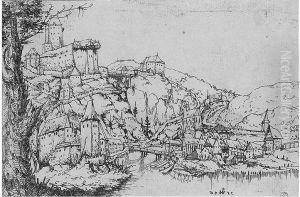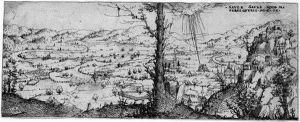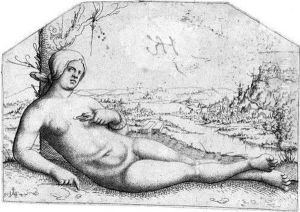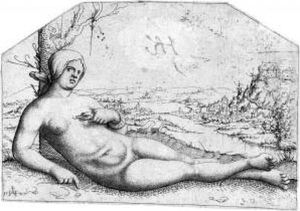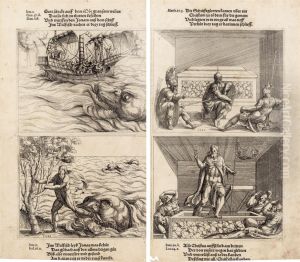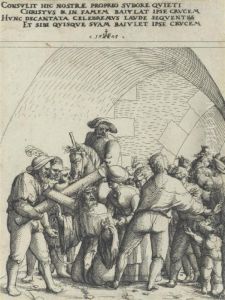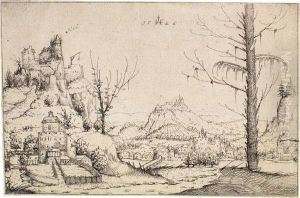Augustin Hirssfogel Hirschvogel Paintings
Augustin Hirschvogel was a notable German artist, known primarily for his work as a printmaker, glass painter, and cartographer in the 16th century. Born in 1503 in Nuremberg, a city renowned for its artistic and cultural vibrancy during the Renaissance, Hirschvogel came from a family with a strong background in the arts. His father, Veit Hirschvogel, was a celebrated potter and glass painter, providing Augustin with an environment that nurtured his artistic talents from a young age.
Hirschvogel's career began in the realm of glass painting, but he eventually became more renowned for his engravings and etchings. His work in cartography also earned him significant recognition, with his maps contributing valuable geographical knowledge during the period. In 1525, he moved to Vienna, where he continued to develop his skills and produced a significant body of work, including maps, landscapes, and architectural drawings.
One of Hirschvogel's most notable contributions to the art world was his advancement of etching as a printmaking technique. He was among the early German artists to adopt and refine this method, which allowed for greater detail and subtlety in prints. His etchings often featured landscapes, cityscapes, and architectural studies, showcasing his keen eye for detail and his ability to capture the essence of his subjects with precision and elegance.
Despite the acclaim he received for his work, details about Hirschvogel's personal life remain relatively scarce. What is known is that his legacy in the realms of printmaking and cartography has endured, with his works being held in high esteem and continuing to be studied by art historians and collectors alike. Augustin Hirschvogel passed away in 1553, but his contributions to the art world have left an indelible mark on the history of Renaissance art in Germany.
